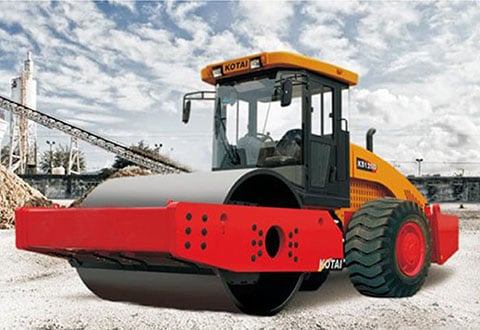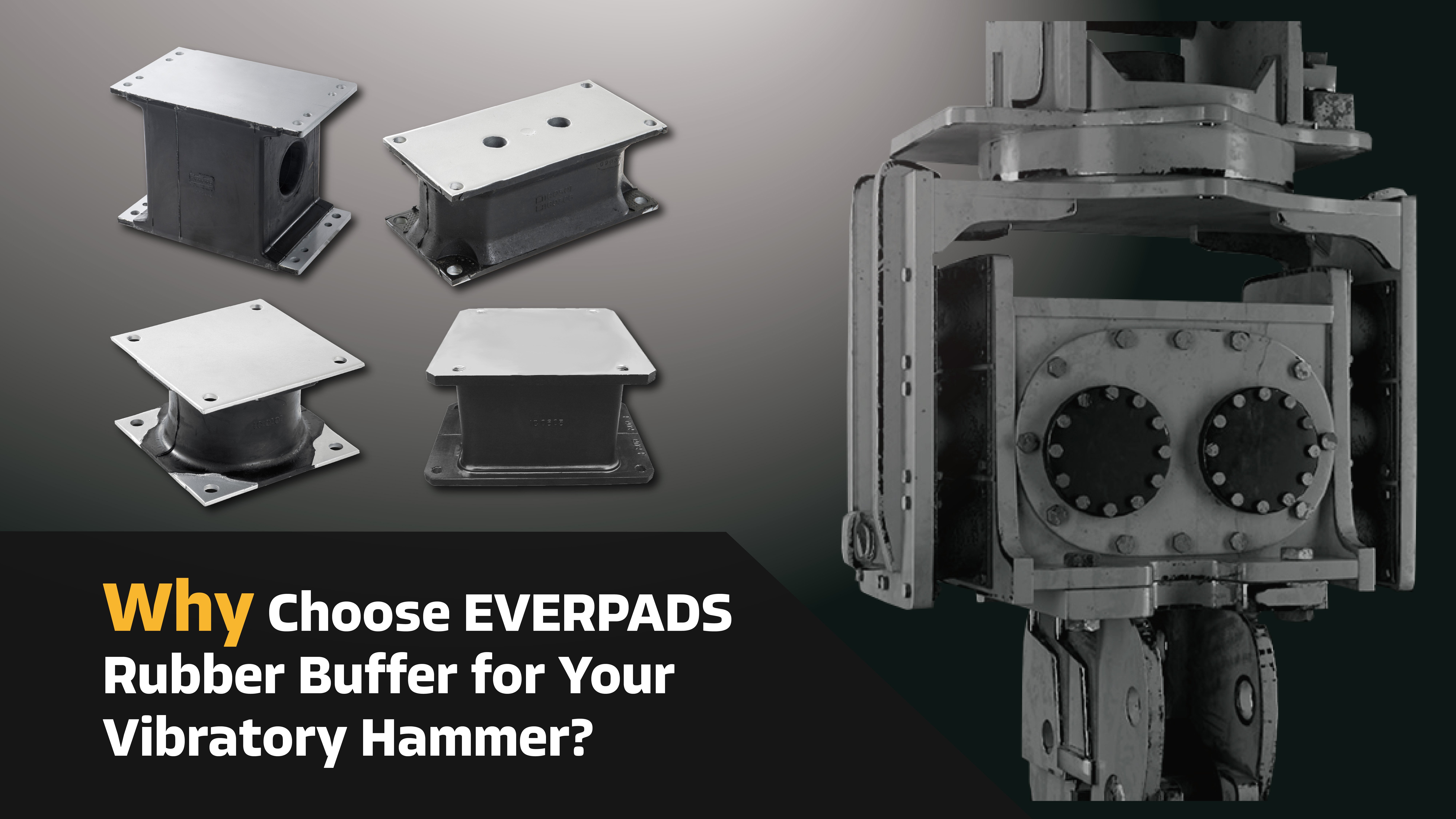The Guide of Rubber Buffer in Optimal Vibratory Pile Hammer Operation
05. Sep. 2023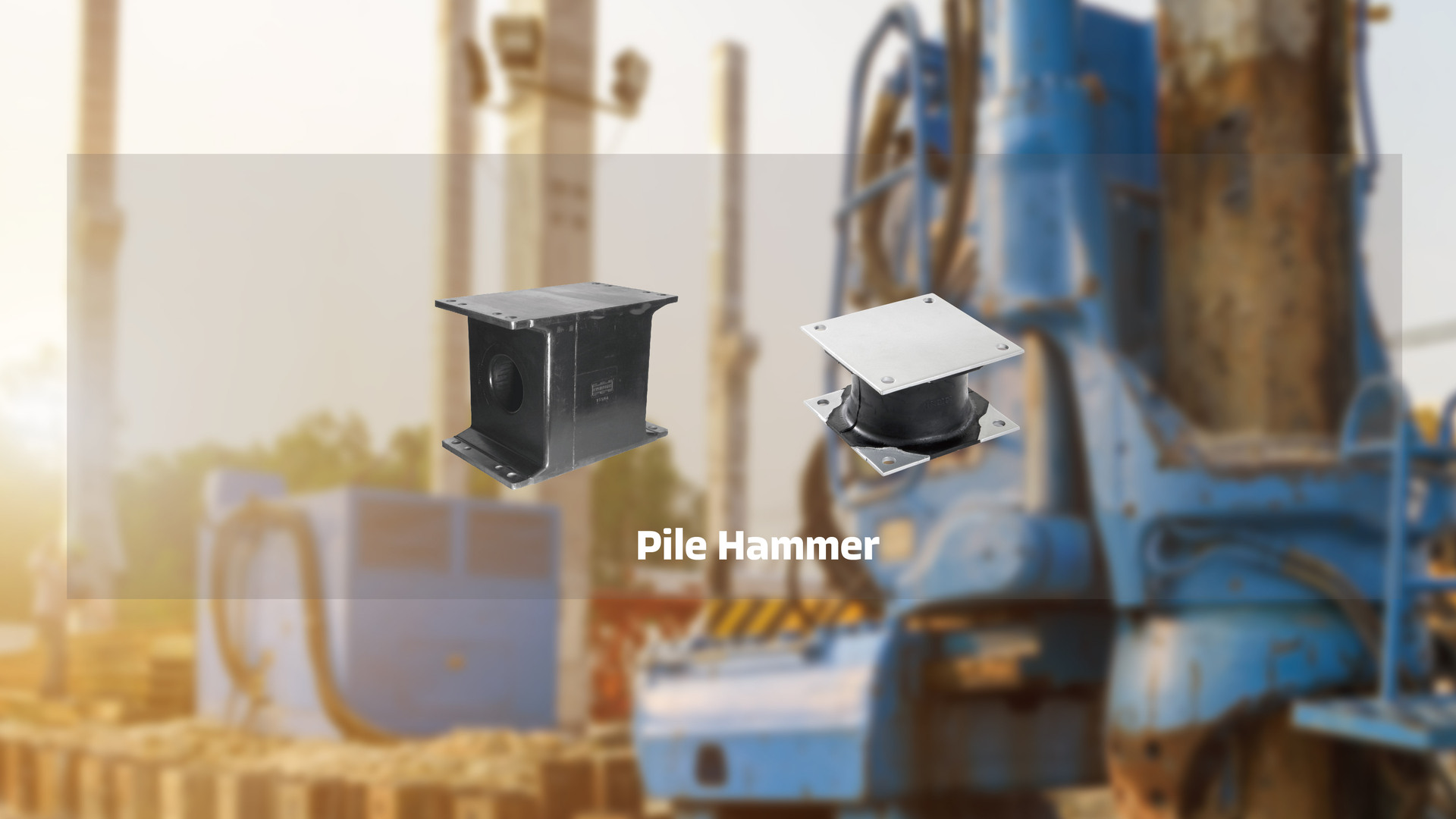
Pile driving, a crucial aspect of modern construction, relies heavily on specialized equipment - particularly the vibratory hammer or pile hammer. A rubber buffer or elastomer serves as a vital component of the pile hammer or vibratory hammer, also called a vibro hammer. It helps ensure that the hammer operates smoothly, efficiently, and safely and that it will perform at an optimal level.
Yet, like any machine component, rubber buffers can occasionally fail. When this occurs, vibratory hammers can become inoperable and/or dangerous to operate. This article explores some common reasons why a rubber buffer might break during the operation of a vibratory hammer or pile hammer.
Table of Contents:
1. What is Rubber Buffer or Elastomer?
2. Understanding the Role of Rubber Buffers in Pile Hammers
3. The Impact of Rubber Buffers on Pile Hammer Performance
4. The Consequences of Rubber Buffer Failure
5. Understanding the Causes Why Elastomer Rubber Buffers Break in Vibratory Pile Hammers
6. Choosing the Right Rubber Buffer for Your Vibratory Hammer
7. Preventive Measures and Maintenance
8. Conclusion
What is Rubber Buffer or Elastomer?
A rubber buffer, commonly known as an elastomer, is a key component of a vibratory hammer. Since rubber is highly flexible and durable, it can experience significant deformation when subjected to stress and return to its original shape once the stress is removed. This elasticity helps the buffer to withstand high-frequency vibrations and repeated use. The rubber buffer absorbs the kinetic energy from the vibratory hammer as it is driven into the ground, reducing machine wear and tear and noise, and improving vibratory hammer performance and safety.
► The ten-year-old Pinkoi still exudes the atmosphere of start-up culture
Materials Used for Rubber Buffers
Elastomers are commonly made using a broad range of rubbers. For example:
Natural Rubber
Natural rubber comes from the latex of rubber trees and offers good elasticity and mechanical properties.
Styrene-Butadiene Rubber
This is a form of synthetic rubber that offers good abrasion resistance.
Nitrile Rubber
A synthetic rubber that is known for its excellent oil and fuel resistance.
Silicone Rubber
A synthetic elastomer that offers high-temperature resistance and electrical insulation properties.
Shapes of Rubber Buffers
There are several different shapes of rubber buffers, including:
-
Cylinder Shape: A cylinder rubber buffer is highly versatile and durable. They are typically designed to absorb impact and prevent metal-to-metal contact.
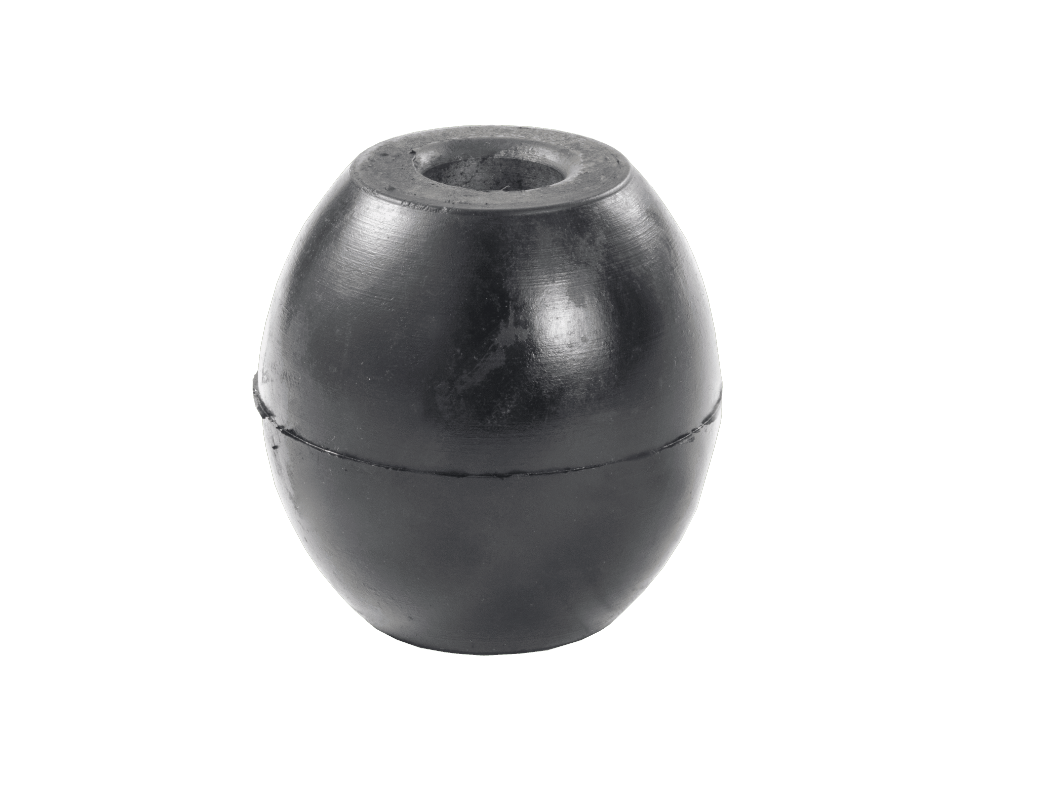
-
Cube Shape: A cube-shaped buffer distributes force more evenly compared to a cylindrical one. With cylindrical buffers, the force tends to concentrate at the center of the rubber, leading to stress and potential tearing from that central point. In contrast, a cube-shaped buffer evenly distributes the force across its entire surface, resulting in more stable force absorption. This design minimizes the risk of the buffer splitting from the center.
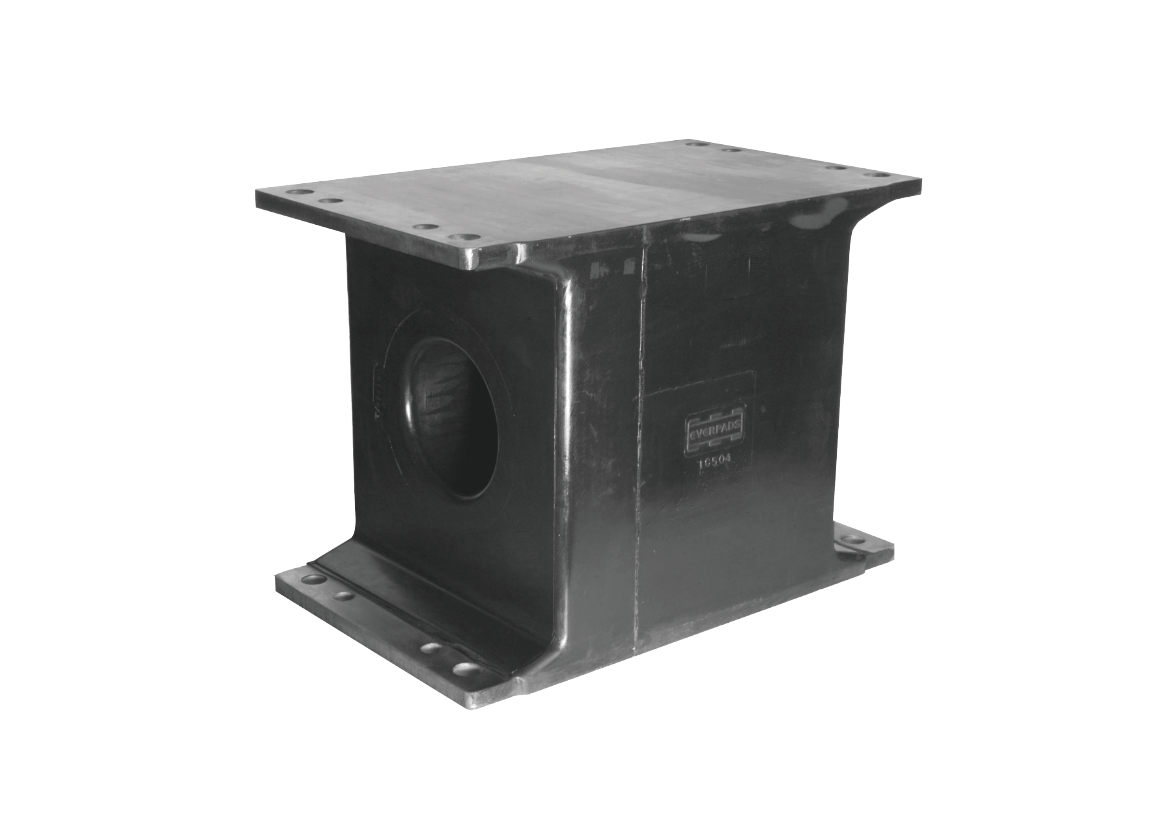
Understanding the Role of Rubber Buffers in Pile Hammers
A rubber buffer in a pile hammer or vibratory hammer plays a crucial role in absorbing the force generated as the hammer is driven into a hard object. The rubber buffer is positioned between the hammer and ram or between other moving components. When the ram point strikes piles it generates tremendous force. This force can be detrimental to both the piles and the equipment. Rubber buffers absorb this force, reducing the recoil force applied to the piles and the vibro hammer.
In addition to force, when the piles are struck it produces intense vibrations. These vibrations can damage nearby structures, equipment, or even buildings. The buffer serves to dampen these vibrations. The buffer also reduces noise levels, making projects less of a disturbance to people living or working nearby.
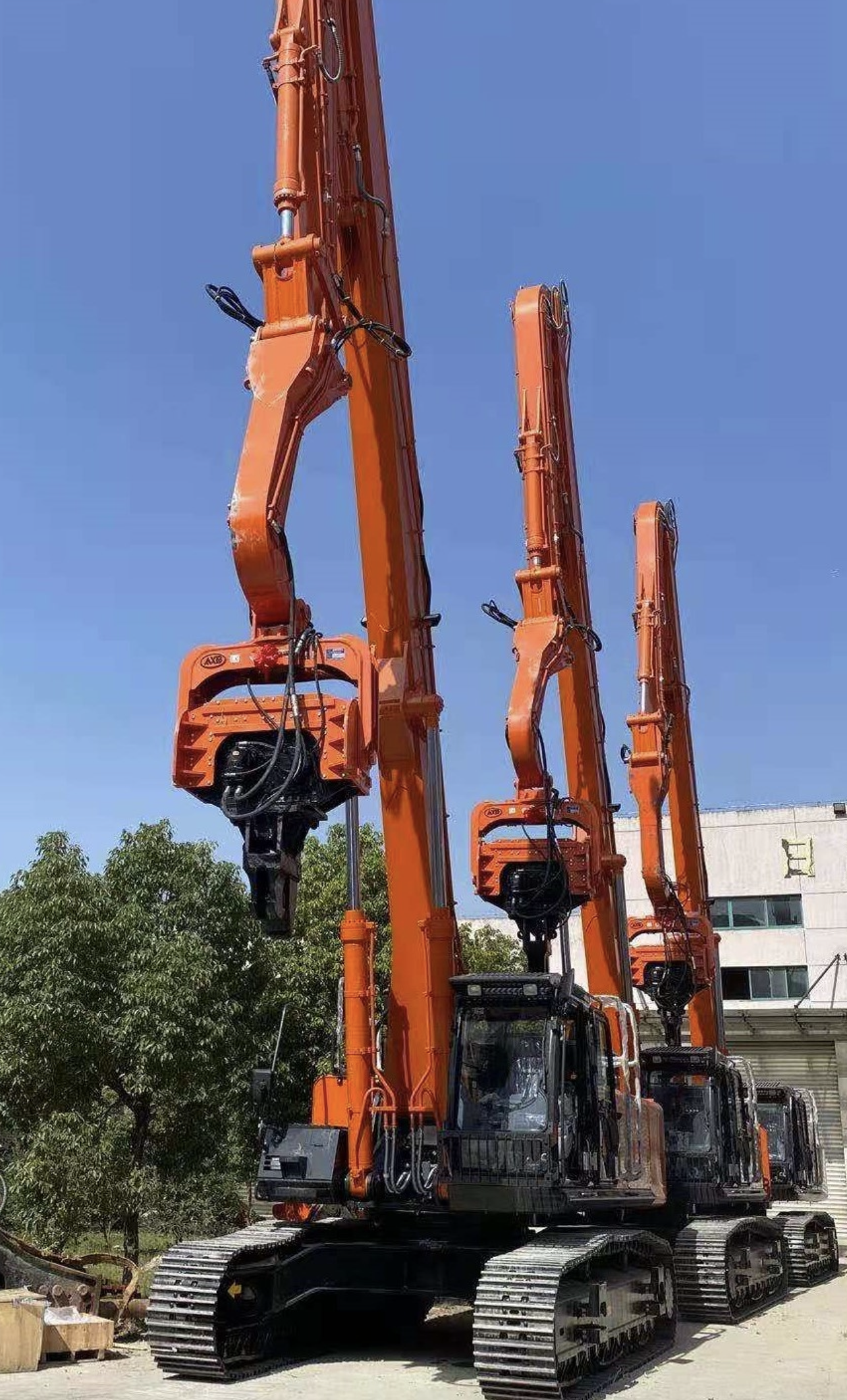
The Impact of Rubber Buffers on Pile Hammer Performance
Rubber buffers are crucial to ensuring that a vibro hammer will perform at an optimal level. By absorbing the force and vibrations from the vibratory hammer as the point strikes the piles, it in turn protects the internal components from excessive wear and becoming damaged. This extends the life of the equipment and reduces the cost of maintenance.
The rubber buffer also helps the vibratory hammer deliver more consistent and controlled impact during each drive. It achieves this by regulating the energy transferred to the piles, delivering uniform drive depth and settlement, both of which are crucial to ensuring the stability and load-bearing capacity of a structure.
The Consequences of Rubber Buffer Failure
When a rubber buffer fails, it can negatively affect performance of the hammer and the overall success of the job. The consequences will depend on the extent of the damage but some potential outcomes include:
-
Machine downtime: the rubber buffer break will require whole machine shut down and replace a new rubber buffer. It takes time and cost (labor, downtime etc.) However, operators must exercise caution when replacing only a single rubber buffer. A new rubber buffer, due to its enhanced properties such as improved elasticity, resilience, and structural integrity, might not wear at the same rate as the older ones. This discrepancy can lead to uneven force distribution.
-
Increased impact forces. A broken degradation (hardened) rubber buffer can result in more force being transferred to the pile, placing greater stress on the hammer, and reducing its efficiency and life.
-
Increased vibrations. This can lead to higher levels of vibrations traveling through the point of the hammer to internal components and into the surrounding environment, potentially causing damage to nearby structures.
-
Louder operation. A broken rubber buffer may create a noisier environment.
-
Inconsistent performance. A broken rubber buffer can create an irregular or unpredictable hit when driving piles. This can result in uneven pile depths, settlement issues, and a compromised structure.
-
Safety risks. In extreme cases, broken rubber buffers could cause mechanical failure or malfunctions. This can pose serious safety risks to operators or those nearby.
To avoid these potential problems and to extend the life of your gear, it's essential to regularly inspect and maintain the rubber buffer. If any damage or wear is detected, the buffer should be promptly replaced to ensure the continued efficiency, safety, and performance of the gear.
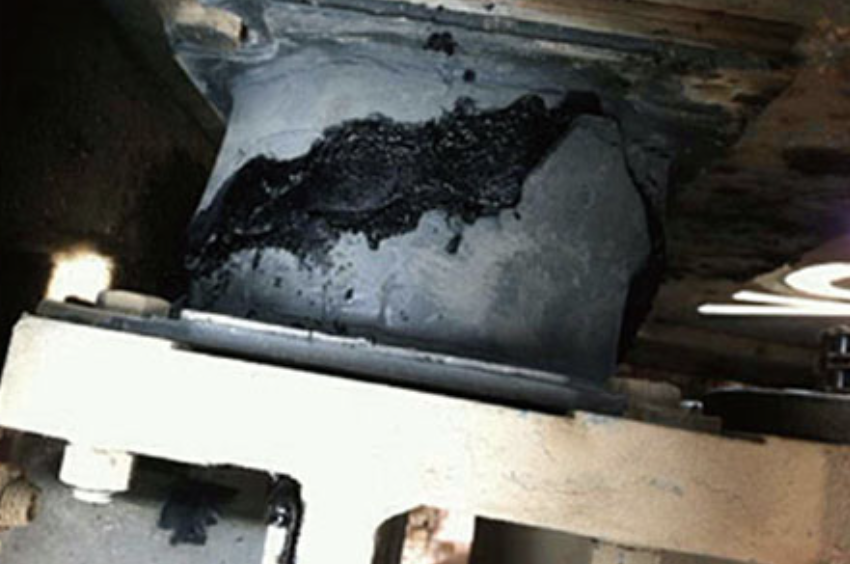
Understanding the Causes Why Elastomer Rubber Buffers Break in Vibratory Pile Hammers
While rubber buffers are designed to withstand heavy-duty use, they are not invincible. Several factors can contribute to their failure:
Inappropriate Operation of Vibratory Hammers
Incorrect or inappropriate operation of the vibratory pile hammer can cause premature failure of the rubber buffer. This is especially evident during the pile extraction process. If operators pull the machine up too quickly or without adequate care, it can place substantial stress on the buffer, leading to tears in the rubber material. Proper handling and operation of the machine are vital in preventing such issues.
Incorrect Installation
If the buffer is not installed correctly, it can become subject to irregular stress patterns, causing the buffer or other vibro hammer components to become broken. Moreover, an incorrectly mounted rubber buffer may not absorb vibration as the vibratory hammer is driven into the ground or an object, causing it to degrade faster.
Age and Wear
Rubber buffers, much like any other material, are subject to aging and wear over time, especially when the gear is subjected to continued use. This degradation process, often referred to as rubber fatigue, is accelerated due to multiple factors inherent to the working of vibratory pile hammers.
An often overlooked yet significant contributing factor to this process is the heat generated through continuous cyclic loading. Each cycle of compression and relaxation generates heat within the rubber buffer. This heat accumulation, especially in high-frequency operations, can accelerate the degradation process of the rubber material. As the temperature increases, the rubber may become hardened and lose its elasticity, becoming brittle over time. This brittleness exacerbates the formation and propagation of cracks, accelerating the rubber's fatigue process and further reducing the buffer's overall life and effectiveness.
Supplementary, excessive temperatures can affect the adhesive dissolution between the rubber and the metal plate, leading to the detachment of the metal plate from the rubber.
Numerous factors, such as the frequency and intensity of use, specific operational conditions, and especially the quality of the rubber material used, can influence the speed of this wear-and-tear process. As such, understanding these influences and regularly checking for signs of wear are vital for maintaining the longevity of the rubber buffer and ensuring the efficient operation of the vibratory pile hammer.
Environmental Conditions
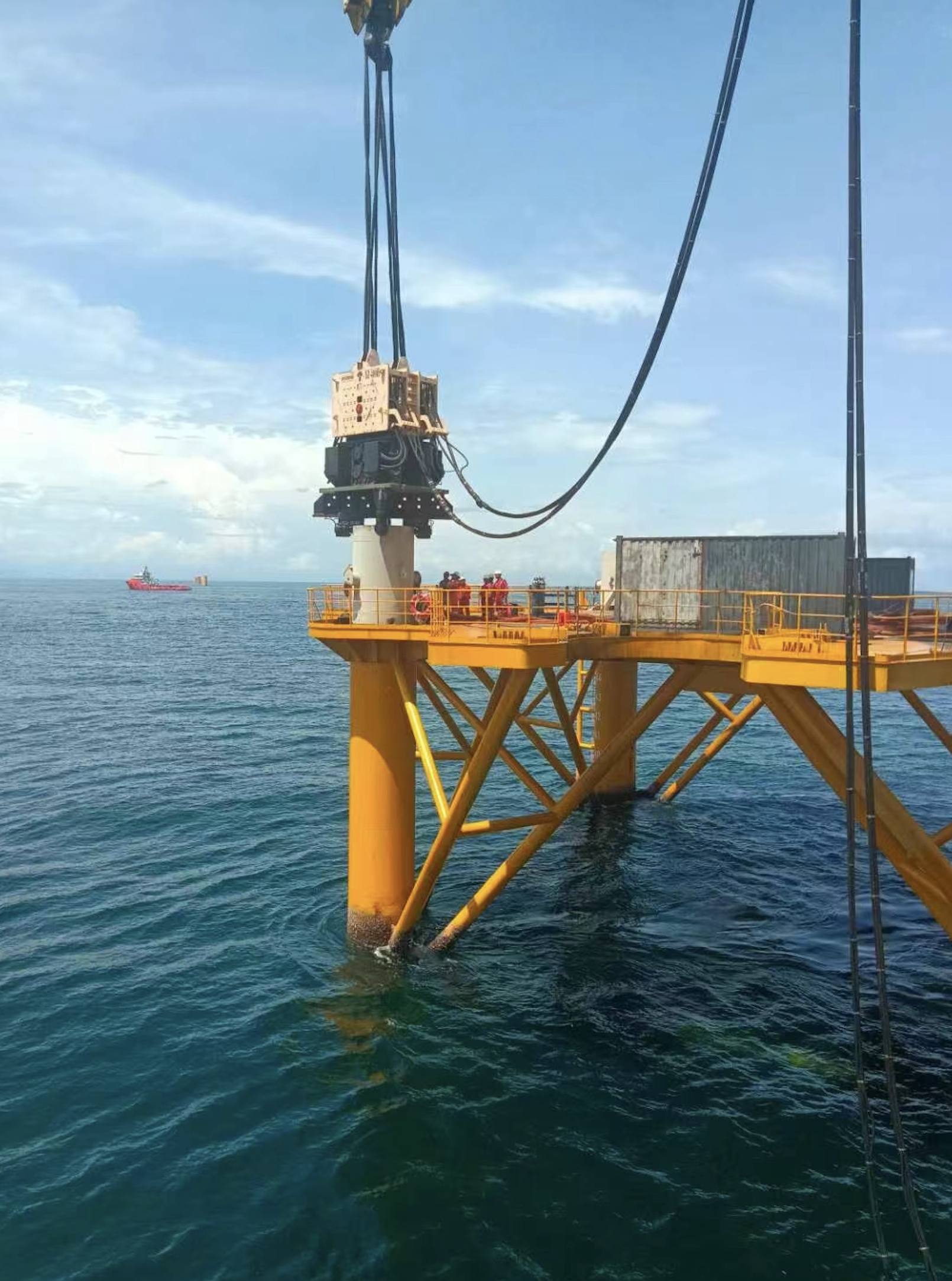
Rubber buffers, while resilient, are not immune to the influences of their environment. Various environmental factors can contribute to the crucial components' degradation and potential failure. The construction of nearshore or offshore can influence the rusting of the metal plates in the shock absorbers. Seawater can easily corrode the adhesive points between the shock absorber and the metal plate, leading to gradual detachment and other related issues.
One such factor is extreme temperatures. Both a low temperature and a high temperature can significantly impact the rubber's physical properties. High temperatures can cause the rubber to lose its hardness and limit its strength while freezing temperatures can turn it brittle. These changes in the rubber's state can lead to accelerated wear and tear and premature breakages.
Furthermore, exposure to certain chemicals can also impact the integrity of the rubber buffer. A certain type of oil, solvent, or other aggressive substances can cause the rubber to swell, become hard, or degrade faster. This can affect its ability to absorb vibrations effectively and cause it to fail prematurely.
The geology of the work site can also present environmental challenges. For instance, if a vibratory pile hammer is used in areas with ground composed of abrasive soil or rock types or other debris, the rubber buffer can experience increased wear and tear.
Another example is the environment associated with specific projects, such as bridge construction in marine environments. The presence of seawater and its associated elements can contribute to the erosion and degradation of the rubber buffer. Saltwater is particularly corrosive and, over time, reduces the strength of the rubber potentially causing it to fail.
Understanding these environmental risks and taking measures to protect rubber buffers, where possible, can greatly increase their longevity and reliability. Protective coatings, regular inspections, and timely replacements are all strategies that can help mitigate the damaging effects of harsh environmental conditions.
Failing to Keep the Pile Hammer or Vibratory Hammer Lubricated
Failing to keep a pile hammer or vibratory hammer lubricated can cause damage to the rubber buffer. Damage to rubber buffers in vibratory hammers due to inadequate lubrication can be caused in several ways including:
-
Increased friction. If not properly lubricated with grease or oil, the rotating eccentric weight of a vibratory hammer can create high levels of friction.
-
Heat generation. Rubber is sensitive to high temperatures and can reduce its mechanical properties.
-
Premature wear. The rubber buffer in the vibro hammer can crack, tear, or become deformed, which will limit its ability to absorb force.
-
Reduced vibration isolation. When the rubber buffer in the hammer becomes damaged, excessive vibrations can be transmitted to a surrounding object, potentially causing further damage.
To prevent damage to the rubber buffer and to maximize the driving performance of the vibratory hammer, regular lubrication with grease or oil is essential. Choose the appropriate grease or oil based on the manufacturer's recommendations for the pile hammer or vibratory hammer. Regularly replacing the oil can prevent impurities or degraded oil from causing the machine to overheat.
Manufacturing Defects
In the creation of any product, including rubber buffers, manufacturing defects can arise that can spell trouble from the beginning. Even minor manufacturer defects to components may result in sub-optimal performance and lead to premature failure under normal working conditions.
These defects can stem from different stages of the production process, such as impurities in the rubber mix, inconsistencies in the molding process, or improper curing, all contributing to a less reliable end product. Even the handling during packaging and transportation can cause defects.
However, advancements in rubber technology and the manufacturing process have allowed manufacturers to remove many defects. Sophisticated quality control measures, precise molding techniques, and advanced curing processes contribute to producing high-quality, reliable rubber buffers. This underscores the importance of choosing reputable manufacturers who leverage these advancements and adhere to stringent quality standards.
If you suspect a manufacturing defect when the vibro hammer is being operated, it's crucial to not drive piles and replace the buffer promptly to avoid further damage and safety risks. Recognizing potential manufacturing defects and understanding the significant role that technological advancements play to reduce such issues is essential to getting the most out of your vibratory pile hammer.
Rubber Buffer Issues
Too Hard: When the pile driver operates, it may easily generate high temperatures or fail to activate the hard rubber buffer, making it impossible to drive the pile into the ground. There's also a possibility that the rebound recoil force is too strong, causing damage to the metal connection points of the pile driver.
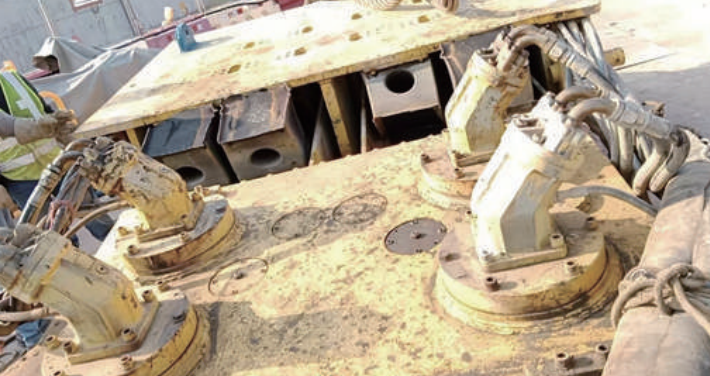
Short Lifespan
Without proper resilience, these absorbers can become brittle and even split.
Heat Resistance Concerns
Normal rubber in absorbers heats up, becoming more elastic, which usually means less power is needed for equipment operation. However, absorbers without low heat generation can overheat, causing the rubber to lose its elasticity and toughness. This can lead to deformation, swelling, and other issues.
Metal Plate Issues
The metal plate in these absorbers hasn't been treated for rust or reinforced. This can lead to breakage from vibrations or stress. The absence of rust prevention can also cause detachment from the rubber.
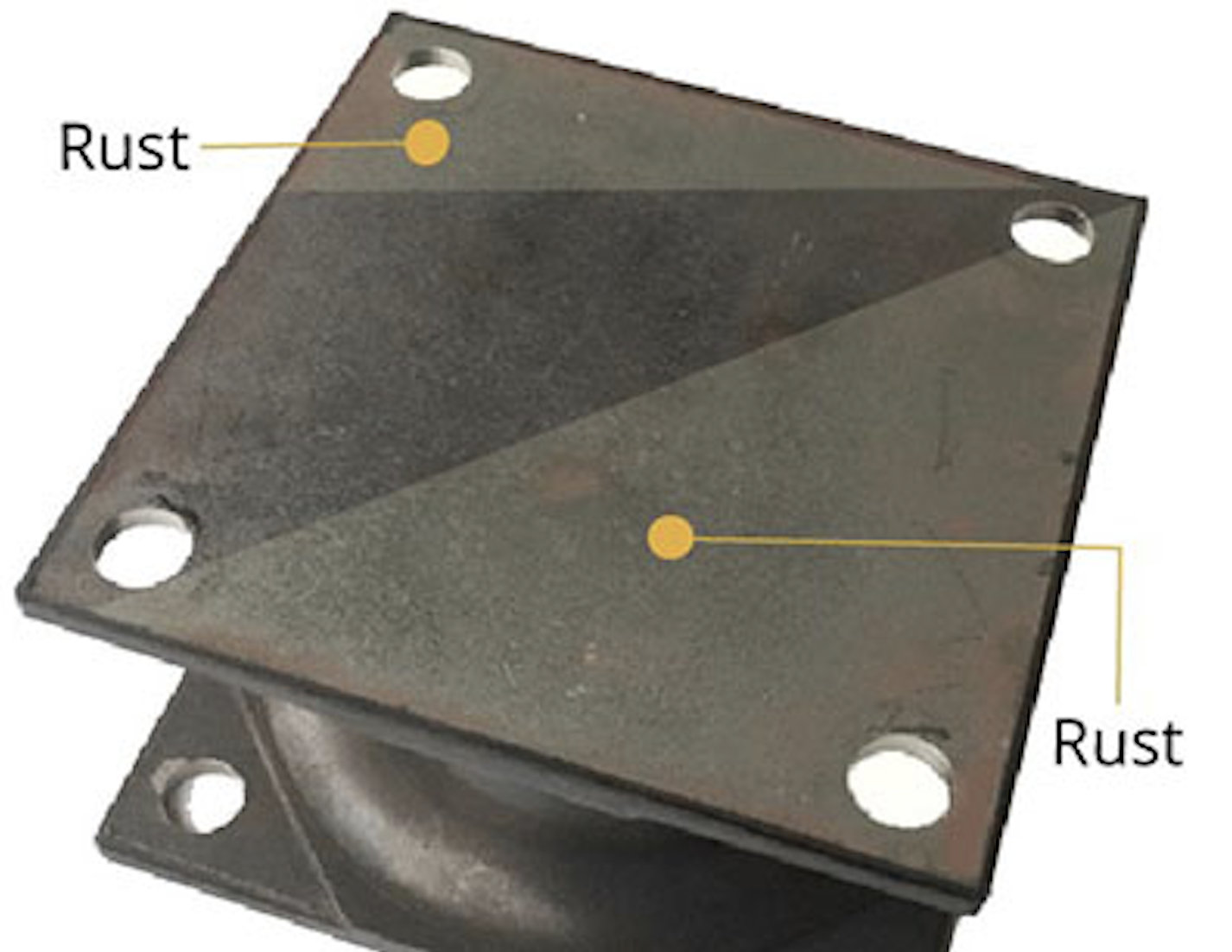
Cost Concerns
Using low-quality rubber materials and compounds can be costly in the long run. They can't handle the stress from extended pile driver operations, leading to breakages. This means more frequent replacements, higher maintenance costs, and a reduced lifespan for the equipment."
This version is more streamlined and should resonate better with a U.S. audience. Let me know if this works for you or if you'd like further adjustments!
Choosing the Right Rubber Buffer for Your Vibratory Hammer
Another significant factor that can lead to the premature failure of a rubber buffer is the selection of the incorrect buffer for the specific machine requirements. Different hammer machines have varied maximum driving and extracting forces, each requiring a buffer that can carry and support its workload.
The correct dimension of the buffer is just one aspect to consider. It's equally important to ensure that the buffer can meet the operational demands of the machine. This includes absorbing and dampening the vibrations produced by the machine's specific force output.
Verifying that the chosen rubber buffer can fulfill these requirements when purchasing replacements, especially from the aftermarket is important. Suppliers should provide comprehensive information about the buffer's specifications and its compatibility with different hammer machines. Choosing a buffer that is not suited to the machine's requirements can lead to accelerated wear and tear, reduced performance, and potential failure of the buffer.
Ensuring the right buffer is chosen for the specific machine requirements and operation conditions will increase the buffer's lifespan and enhance the full life and overall efficiency of the hammer machine.
Preventive Measures and Maintenance
Understanding why rubber buffers fail is the first step in a preventive maintenance plan. Regular inspection and maintenance of the buffers are crucial for detecting signs of wear and tear early on. It's also vital to choose a manufacturer who guarantees that rubber buffers are capable of withstanding intense environmental conditions and provides clear guidelines for proper installation. The right manufacturer will be able to offer products specifically designed to meet the challenges of your specific operations. Always refer to the manufacturer's guidelines for proper care and maintenance, and seek advice from a professional if in doubt.
Conclusion
The rubber buffer plays a significant role in the functioning of a vibratory pile hammer. Fully understanding why a rubber buffer may fail is crucial for anyone involved in pile-driving operations. Proper installation, regular maintenance, and understanding the operating environment's effects can extend the rubber buffer's lifespan, resulting in more efficient and safe pile-driving operations. By taking these factors into consideration, you can ensure that your vibratory pile hammer operates at its optimal level, maximizing its performance and longevity.
Explore Why Choose EVERPADS Rubber Buffer for Your Vibratory Hammer
.png?width=698&height=417&name=%E5%AE%98%E7%B6%B2logo%20(1).png)

